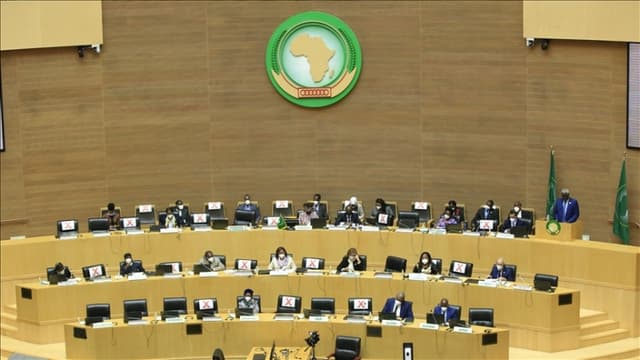
The existence of shale gas reserves (known as one of the unconventional gas resources) has been known for several decades, but its production had been hampered by lack of technology and low oil prices. For over a decade, the price of crude oil has been hovering around the $100 per barrel mark and this possibly triggered the invention of the ‘fracking’ technology for the exploitation of shale gas reserves. The other plausible reason for the advent of the ‘fracking’ technology may be related to President Obama’s energy policies, which is in favor of achieving US self- sufficiency in supply of energy resources.
What are shale gas resources & where are they abundantly found?
Shale gas refers to natural gas that is trapped within fine-grained sedimentary rocks. The gas which is more environment-friendly is unleashed using the combination of horizontal drilling and hydraulic fracturing. Shale gas adheres tightly to rock formations. It is similar to natural gas produced by conventional methods. However, its commercial production was made possible by the ‘fracking’ technology developed in the US about six years ago, whereby chemicals and water are injected at very high pressure to release the gas.
According to China’s Land & Resources Ministry, China has 25.08 trillion cubic meters of exploitable onshore shale gas reserves, whereas the US has 13.65 trillion cubic meters of technically recoverable gas from shale formations. However, according to the US Energy Information Administration (EIA), as at 2013 China has the world’s largest technically recoverable shale gas reserves estimated at 31.2 trillion cubic meters, tcm (equivalent to 1, 115 trillion cubic feet) followed by the US which has about 18.6 trillion cubic meters (equivalent to 665 trillion cubic feet) of recoverable shale gas reserves.
Although China’s shale gas reserves are almost double that of the US, its current production targets are significantly lower than the US production which has reached about 290 billion cubic feet (bcm) in 2012. Also, energy experts have identified a number of factors that might slow down China’s shale gas development relative to the US. Some of these factors are geology, low natural gas prices, underdeveloped gas pipelines, water shortages, and a dearth of advanced technology. Shale layers in the US are simple and uniform, but China’s shale layers (like those of Europe) are heavily faulted as reported by Daiwa Securities. The implication is that China’s rock formations are deformed due to underground movements. As a result, only short horizontal sections can be drilled thereby incurring higher drilling costs.
China’s mainland shale gas is also trapped deeper underground, which further increases extraction costs. Conversely, large-scale operations may reduce China’s well construction costs. For example, it has been estimated that China’s Fuling shale gas field is worth about $2.5bn, and the per-well drilling cost could fall by 100% (from 100 million Yuan to 50 million Yuan). This projected lower drilling cost is still higher than the US shale operations. However, mainland shale gas prices may double the US shale gas price in the spot market if the subsidy from the Chinese government is factored in. Reducing costs will be a key challenge for shale development in China, which industry experts expect will be ultimately successful given the industry’s scale and manufacturing capability. Considering that China has the highest shale gas reserves in the world, it may be useful to examine the Chinese Government policies and Chinese oil companies’ plans regarding its production.
Chinese Government & Shale Gas Resources Development
China is currently the world’s fastest-growing major economy with annual GDP growth rates averaging 10% for the past 30 years. As a result, energy demand in China has increased significantly over the past few decades in line with the nation’s accelerated industrialization. According to BP report, China is projected to overtake the US as the world’s largest oil consumer by 2027 and Russia as the second-largest gas consumer by 2025.
China is a huge consumer of natural gas, and in 2013 alone consumed about 170 bcm, with about one-third coming from imports. The advent of shale gas production technology will act as a boost to China’s domestic gas production and usage. As a result, the Chinese Government has set robust shale gas production targets at 6.5 bcm for 2015 and 60-100 bcm target for 2020. It is likely that the 2020 target was derived from the growth trajectory of shale production in the US between 2006 & 2012. The main challenge facing the two Chinese Oil giants (Petrochina & Sinopec) is how to cut by half the drilling cost per well for shale gas production. The current drilling cost per well is $16m, and the target is to reduce this to $8m per well. Sinopec & Petrochina’s collective output should reach or surpass the 6.5bn shale gas output target set by the government for 2015. However, meeting the government’s 60-100 bcm targets for 2020 will be very challenging.
An interesting part of the Chinese Government-driven reforms is to open shale development to private sector investment. China’s Ministry of Land & Resources revealed that qualified companies for shale gas development will invest 12.8b Yuan (i.e. 2bn Dollars, or 1.3b Pounds) to search and develop 19 shale gas areas allotted to them. The companies comprise of 14 state-owned firms and two private companies, and are part of a larger group of 57 companies that were given rights to explore shale gas blocks in October, 2013. The Ministry has allotted 26 shale gas blocks for exploration so far. With Chinese Government’s policy to open shale resources development to markets, it is expected that shale gas development in China will thrive. Therefore, China seems the most promising country for shale growth outside the US, and currently accounts for 13% of world shale gas growth according to BP report. Together, the US and China is projected to account for 81% of shale gas production by 2035.
Petrochina
Petrochina, China’s largest energy producer, recently tripled its shale gas development spending based on Sinopec’s announcement of a commercial find of shale gas. Consequently, Petrochina has revised upward its output target of shale gas from 1.5 bcm to 2.6 bcm. However, this merely represents about 2.3% of China’s total natural gas output of around 113 bcm in 2013.
Since 2010, Petrochina has spent about $480m on pilot shale drilling, which marks a slight departure from its primary focus on growing conventional oil & gas portfolio. As a result, Petrochina has over the past four years enhanced its knowledge of shale resources and made some technological breakthroughs, according to Mao Zefeng (the company secretary of Petrochina). Petrochina is aiming for 2.6 bcm of annual shale gas production, and spent more than 10bn Yuan ($12.55bn) in 2012 compared to 3bn Yuan spent between 2010 and 2011. Petrochina’s Chairman was quoted as saying, “The actual spending will depend on results. If efficiency is good, we will increase financial outlays. Otherwise, we will stick with trial exploration”.
According to reports by Xinhua News Agency, Petrochina is poised to achieve an output of 2.6 bcm of natural gas by 2015 using 28 new platforms, and 11 bcm of shale gas by 2020. Petrochina’s Changning & Weiyuan blocks are expected to produce altogether 2 bcm, the Zhaotong block will yield 500 mcm, while projects with foreign ventures will deliver another 100 mcm by the year 2015.
China Petroleum & Chemical Company (Sinopec)
Sinopec is Asia’s largest refiner and has shale gas development as one of its key projects for 2014, after doubling its output forecast from a key field in the Sinchuan area which is part of the nation’s South-West region named Fuling. The Fuling project is expected to yield 10 bcm in 2017, and has about 2.1 tcm of shale gas reserves over 4,000 square kilometers. However, the Fuling shale gas potential is considered to be just a small proportion of the shale potential in the Sichuan basin, with shale gas resources spread over 40,000 to 50,000 square kilometers. The Fuling shale has been adjudged as the best shale discovery in China to date, and arguably one of the best outside of the US.
Sinopec has set up a timetable for the Fuling production capacity construction at 5 bcm annually and by 10 bcm from 2017. This new target is significant considering that Fuling is the nation’s first commercial shale gas project. Sinopec has drilled nearly 30 pilot shale gas wells in the Fuling area of China. Earlier, Sinopec discovered a major shale gas block with a maximum daily output of 105,000 cubic meters in the South-West province of Guizhou.
China National Petroleum Corporation (CNPC)
CNPC, China’s largest oil producer, has also completed its preliminary development plan for shale gas exploration in the North-western province of Sichuan. CNPC currently has nine shale gas wells with a combined production capacity in excess of 80 mcm. The company plans to put more than 110 wells in operation by mid-2015. Exploration efforts by companies operating in the resource-rich Sichuan province would make it possible for China to meet or even surpass production targets for 2015.
Honghua Group
The Honghua Group, a Chinese drilling-equipment maker which hitherto generated bulk of its business from overseas is now seeking domestic expansion by tapping into the nation’s shale gas revolution. Since 2005, this group has sold drilling rigs for use in US gas fields.
Now, the group has recognized a great opportunity in China as the nation has committed to boosting production of gas from shale formations to meet growing energy demand, and also a replacement for dirtier sources of fuel such as coal. Honghua has indicated its interest in participating in future shale gas developments in China by becoming a minority shareholder in projects with state energy producers, foreign companies and local governments.
Europe’s Shale Gas Resources
There are significant shale gas reserves in Britain, Poland, France, Ukraine, & Bulgaria. According to US EIA, Ukraine has Europe’s third-largest shale gas reserves at 42 trillion cubic feet. According to the US Secretary of State for European Affairs, the corporate struggle for Ukraine’s oil and natural gas is probably the reason behind the geopolitics pitting Russia against the West and the ethnic tensions tearing Ukraine East & West.
US oil companies have been pushing for shale gas development in these countries, but have been restrained by significant opposition from citizens and local legislators who worry about the environmental impacts of shale gas extraction (including earthquakes and groundwater contamination caused by hydraulic fracturing or ‘fracking processes. Unlike these European countries, Ukraine offers considerable less opposition because it has been steeped in numerous gas disputes with Russia in recent years and so yearns for energy independence from Russia.
Russia’s state-owned Gazprom, controls nearly one-fifth of the world’s gas reserves, supplies more than 50% of Ukraine’s gas annually, and about 30% of Europe’s. Russia has often used this strategic position as political and economic leverage over Kiev and Brussels. However, this leverage came under challenge on Nov 5, 2013 as Chevron signed a 50-year agreement with the Ukraine Government to develop oil & gas in Western Ukraine. Chevron is expected to spend $350m at the exploratory phase of the project and the total investment could reach $10bn.
This development is expected to enable Ukraine satisfy its gas needs completely and, under a best case scenario, export energy resources by 2020. One wonders whether the Ukraine’s drive for more energy independence from Russia could have led to the present crisis had Ukraine signed up with Gazprom in place of Chevron, for the development of its energy resources. Inevitably, previous gas disputes with Gazprom would not have created a pleasant climate for this sort of joint venture and so Ukraine had to choose western oil giants for JV’s.
In 2013, a number of Western energy companies jostled for corporate rights over Ukraine’s shale gas deposits. Ukraine officials went into negotiations with an Exxon-Mobil-led consortium to explore for hydrocarbons off Ukraine’s Western Black Sea coast. In November 2013, the Ukraine Government signed another production-sharing agreement with an Eni-led consortium of investors to develop unconventional hydrocarbons in the Black sea. Chevron and the Ukraine Government had been negotiating a joint operating agreement for shale development effort in Western Ukraine, prior to Yanukovych’s ouster in February 2014 as the President of Ukraine. Shell also signed an agreement in 2013 with the Yanukovych’s government to explore a shale formation in Eastern Ukraine.
Numerous oil companies, including Petrochina, Repsol, Shell, Chevron, etc have also expressed interest in developing Crimea’s offshore energy assets. In the hope that Crimea’s onshore & offshore fields will yield significant shale energy resources, these companies have substantially expanded their exploration of the Black Sea off the Crimean Peninsula. Some observers believe that one of Putin’s objectives for annexing Crimea was to ensure that Gazprom will control Crimean offshore energy assets, as well as ensuring the continued use of Crimea as host to Russia’s Black Sea fleet. It is expected that when the geopolitics of shale gas development in Ukraine is settled, Ukraine will add significant volumes of shale gas to the growing shale production.
Implications of Shale Gas Development to OPEC Member States
Until the advent of shale gas, as an unconventional natural gas resource, crude oil and natural gas have been the main global energy resources. It would seem from the foregoing that US is the leading producer of shale gas, followed by China. However, China has the largest shale gas reserves and has set ambitious targets for its production. Ukraine is expected to follow suit shortly. Quite ominously for OPEC Countries, the shale producer nations are the largest energy consumers.
One of the major forces in Michael Porter’s “5-Forces that determine industry competitiveness” is the ‘threat of a substitute product’. Others include existing competition among rival companies, threat of new entrants, threat of backward integration, and threat of forward integration. Of all these, one of the most potent is the advent of an alternative product /s.
Therefore, the implications of shale gas revolution are threefold. First, it would seem that an alternative energy and natural gas resource is being aggressively explored and produced in nations who consume the greatest volumes of energy resources. This will likely affect the demand, supply and prices for crude oil and conventional natural gas resources. These effects will exacerbate if the drilling cost for shale wells are significantly reduced.
Second, global environmental concerns are greatly in favor of the use of natural gas as the fuel of the future, as opposed to crude oil. If eventually the price and supply of shale gas gets better than that of the conventional natural gas, OPEC Member States will be forced to find domestic uses for both their crude oil and conventional natural gas or be faced with dwindling revenues from these resources.
Third, the gas-to-liquid (GTL) technology could help transform shale gas to ultra-light refined petroleum products. In the likely event that this occurs, the Rotterdam’s prices for petroleum products derived from refining crude oil will also be adversely affected.
China has set big targets for shale production for 2020, and this should act as the ‘marker’ for OPEC Member Countries. The latter will have to look inwards and start to develop ‘domestic homes’ for their crude oil and natural gas resources. The downstream petroleum industry development should be the primary focus of most OPEC Countries, which will ensure adequate refining capacity for their crude oil and petrochemical plants construction that will convert natural gas and feed stocks from the refining process into petrochemical products. Fertilizer and Ammonia plants will have to be robustly developed as well as secondary plants that will convert petrochemical products to finished goods. Most OPEC member countries that are yet to achieve complete electrification of their countries now have the opportunity to use their natural gas resources to drive an aggressive domestic electrification agenda. This is the time to begin planning and execution of a ‘home-based’ energy industry for most of these countries. It may be too late by 2020.
•Dr Chijioke Nwaozuzu, whose photo appears alongside this piece, is a petroleum policy expert. He writes from Emerald Energy Institute, University of Port Harcourt. Email: cnwaozuzu@gmail.com. Tel: 070 6874 3617 (SMS Only).
























.webp&w=256&q=75)


NEWS EXPRESS is Nigeria’s leading online newspaper. Published by Africa’s international award-winning journalist, Mr. Isaac Umunna, NEWS EXPRESS is Nigeria’s first truly professional online daily newspaper. It is published from Lagos, Nigeria’s economic and media hub, and has a provision for occasional special print editions. Thanks to our vast network of sources and dedicated team of professional journalists and contributors spread across Nigeria and overseas, NEWS EXPRESS has become synonymous with newsbreaks and exclusive stories from around the world.